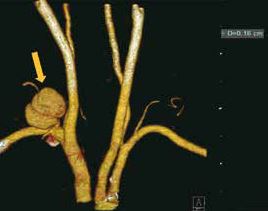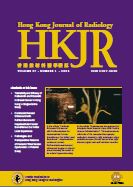Home
About HKJR
Hong Kong Journal of Radiology (HKJR) is the official peer-reviewed academic journal of the Hong Kong College of Radiologists. HKJR is published quarterly by Hong Kong Academy of Medicine Press. HKJR is a continuation of the Journal of the Hong Kong College of Radiologists.
HKJR publishes papers on all aspects of diagnostic imaging, clinical oncology, and nuclear medicine, including original research articles, review articles, perspectives, pictorial essays, case reports, brief communications, editorials, and letters to the Editor. Papers on radiological protection, quality assurance, audit in radiology, and matters related to radiological training or education are also included.
The 2024 Journal Impact Factor for the HKJR is 0.2 (Clarivate, 2025).
FREE full text of ALL issues is available.
Additional materials may be made free at the Editorial Board's discretion.
Online First articles
Online First articles are released before they are included in a journal issue. These articles are fully citable and come with a DOI, enabling the most recent research to be accessed promptly.
Current Issue
Volume 28 Number 2, June 2025
![]() FULL TABLE OF CONTENTS Download the full issue
FULL TABLE OF CONTENTS Download the full issue
Highlights of this issue
About the Cover Images
 |
 |
| In the article “Magnetic Resonance Imaging–guided Biopsy of the Breast: A Ten-Year Experience”. Biopsy techniques for posteriorly located lesions. (Left) A posteriorly located BI-RADS category 4 lesion (arrow). (Right) The patient’s arms are placed down by her sides to relax the pectoralis muscles, allowing the posterior breast to sink deeper into the coil. | In the article “Clinical Applications of Amino Acid Positron Emission Tomography–Magnetic Resonance Imaging in Neuro-Oncology: A Pictorial Essay”. Pituitary gland germinoma. Strong 11C-methionine tracer uptake is noted within the pituitary gland and along the pituitary stalk on pre-treatment hybrid PET-MRI image (sagittal view). |


